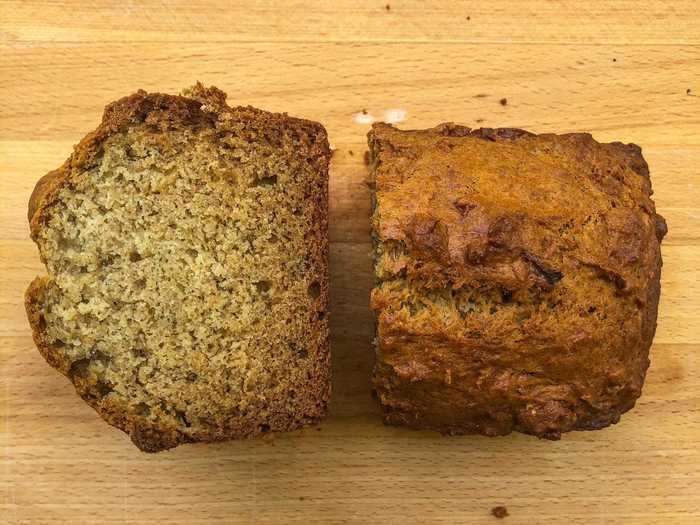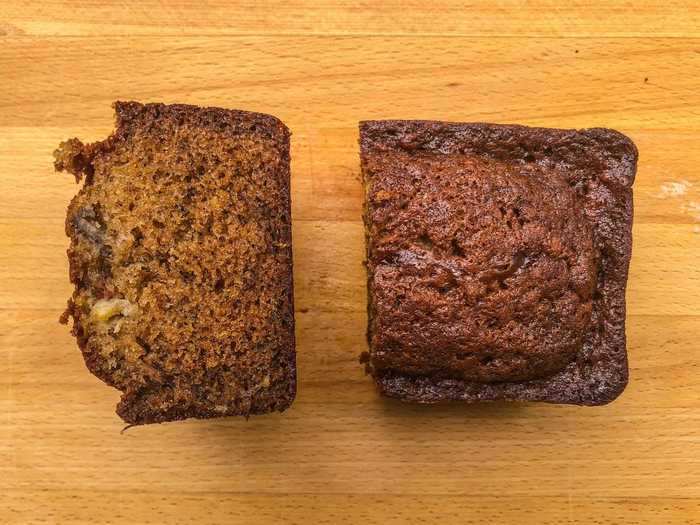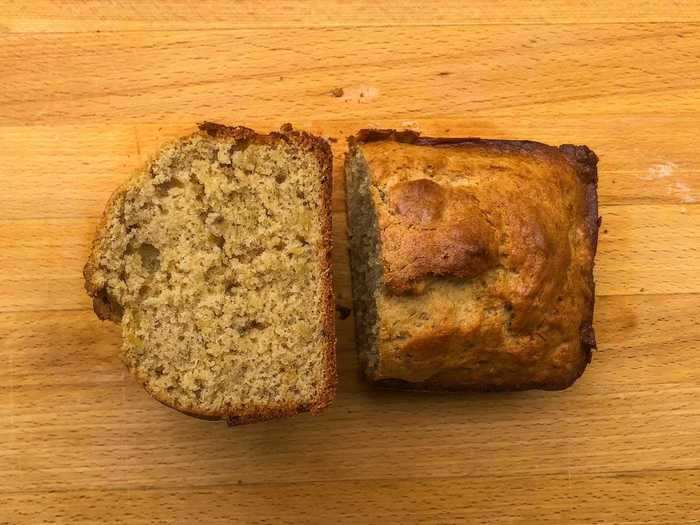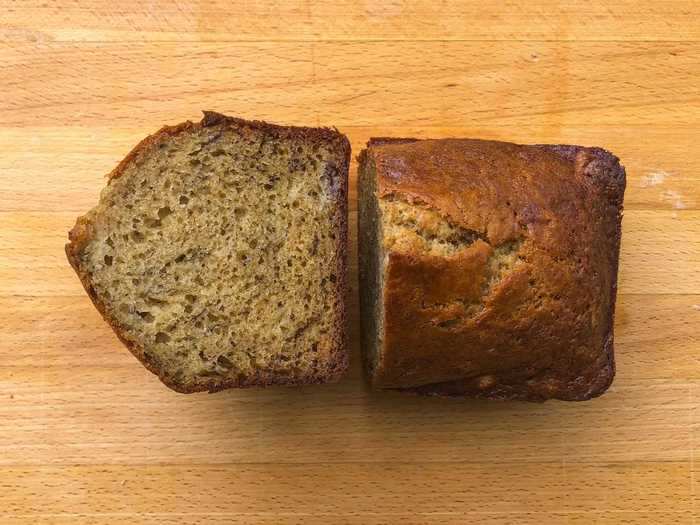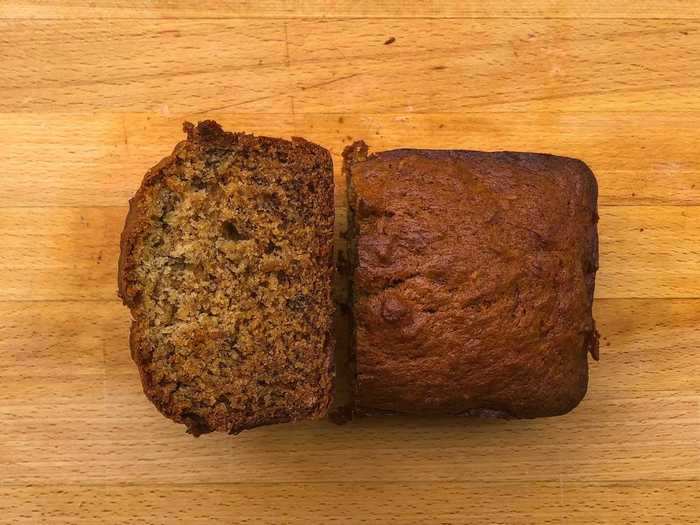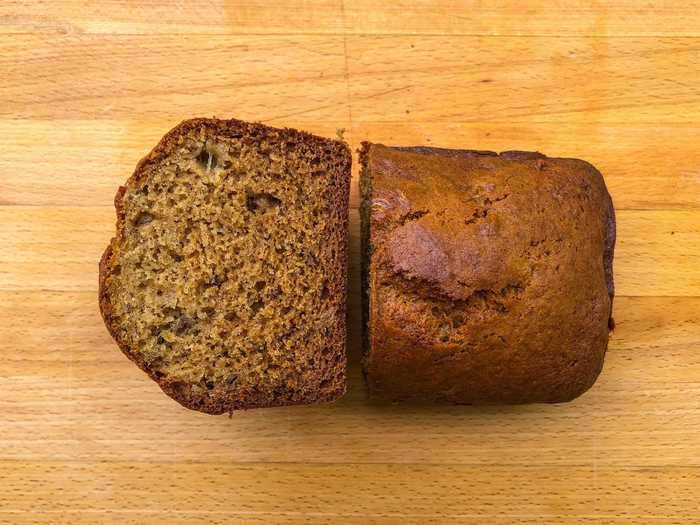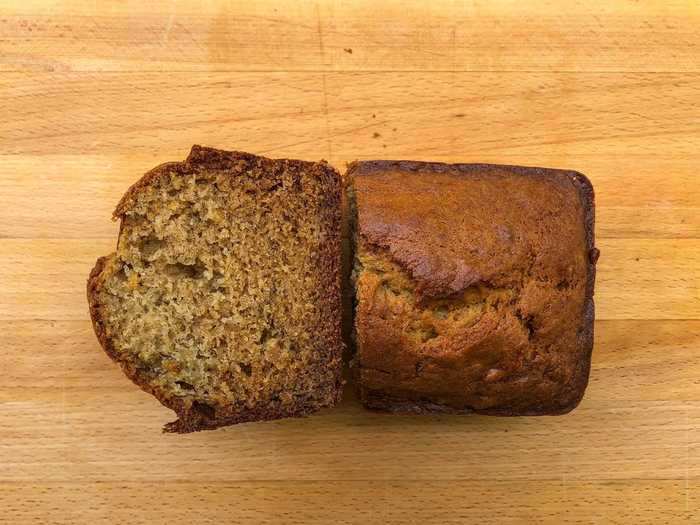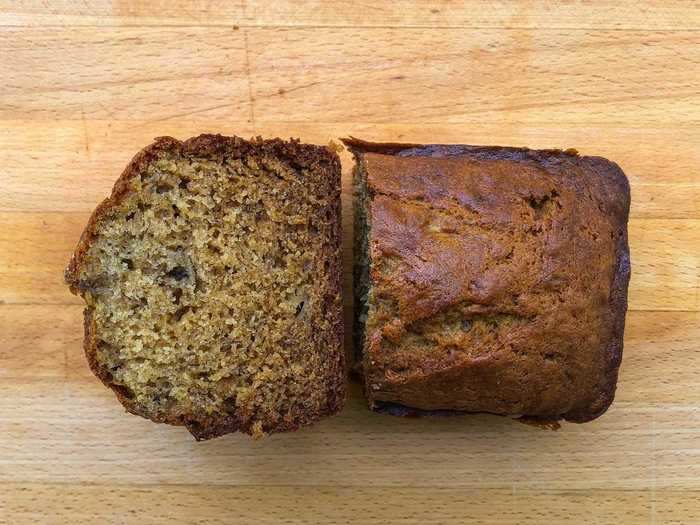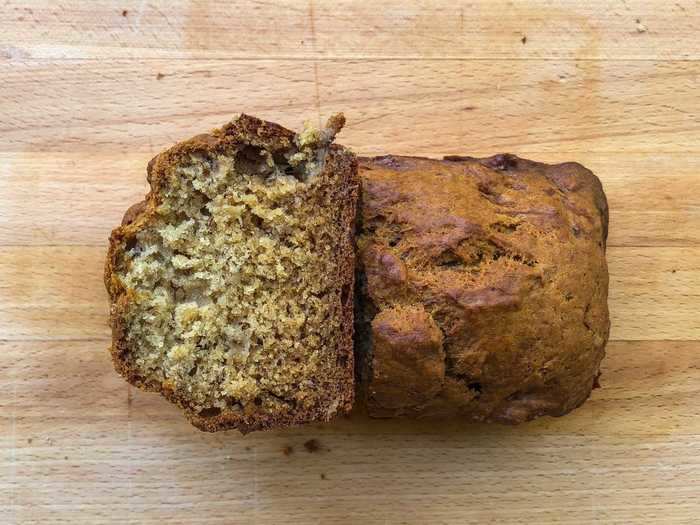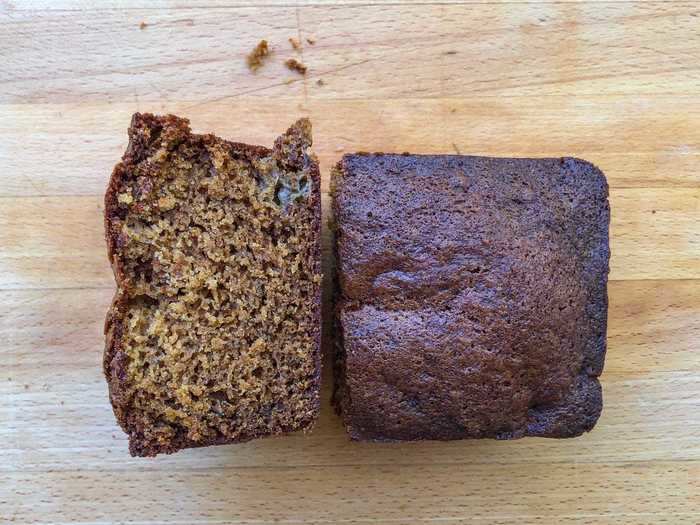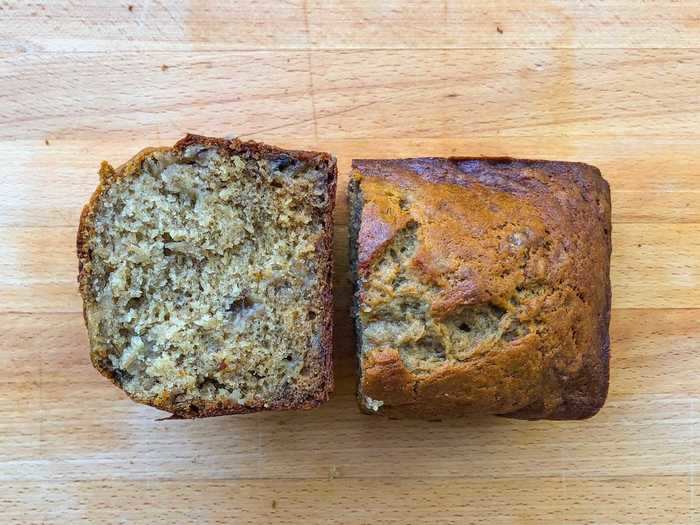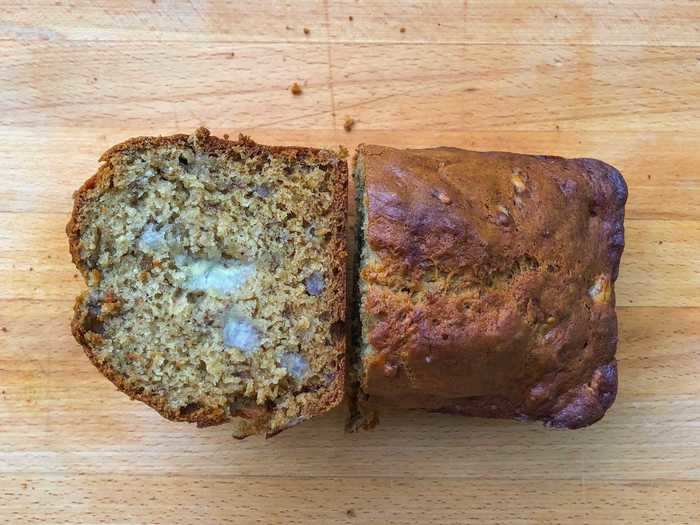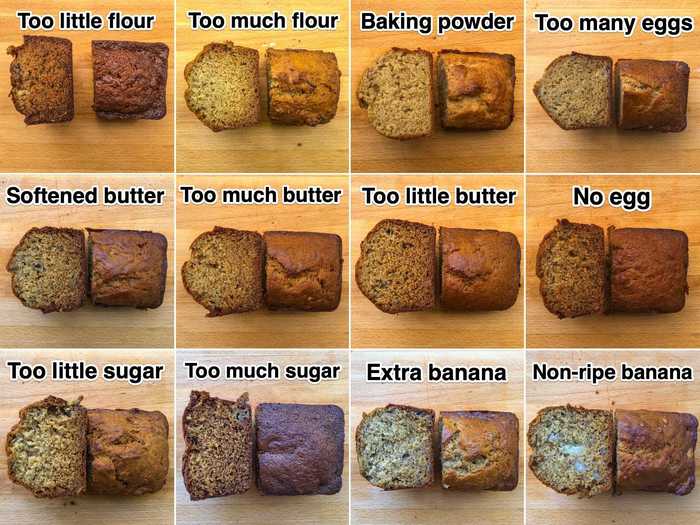Insider
- I made common baking mistakes as I was baking banana bread to see how they would affect the texture and flavor.
- Using lifestyle guru Joanna Gaines' recipe, I made 12 loaves.
- Mishaps like improperly measuring out flour and sugar to mistaking baking powder for baking soda can change the way your bread comes out.
- I found that using too much sugar or too little flour results in a delicious, caramelized loaf, and an unripe banana can actually make it taste better.
- But forgetting to melt your butter makes for a less flavorful banana bread.
Never have I ever made banana bread from scratch — before this assignment, that is.
After intentionally making several baking mistakes to show how they would affect chocolate-chip cookies, I set out do the same while attempting banana bread for the first time.
As I set out to conquer one of my all-time favorite breads, I was faced with a big decision: What recipe should I use? I ultimately landed on lifestyle guru Joanna Gaines' fresh banana bread recipe to make 12 loaves of what is essentially breakfast cake; in an Insider taste test of celebrity banana breads, Gaines' recipe was deemed the most traditional, which made it a convenient choice.
The recipe calls for "very ripe bananas" and suggests baking in a square pan for easy cutting, but, because I had a lot of batches to make, I used miniature loaf tins to minimize waste.
From packing my flour to mistaking baking powder for baking soda, here's what happened when I made 12 common baking errors all in the name of banana bread.
Using too much flour makes for an extra crumbly bread.
A loaf with too much flour.
Rachel Askinasi/Insider
If you're tapping your measuring cup to level out flour as you measure, or you're pushing down the piled-up powder, you'll end up using too much of it.
I packed my flour for this loaf and what I got was a crumbly cake with a dry crust all around. The inside was yellow in color and had a thin ring of tan around the edges. The actual cake inside was drier on the bottom than it was toward the top, which was slightly more moist.
In terms of flavor, this loaf had a distinct banana taste.
Not using enough flour, though, results in a more caramelized-looking loaf.
A loaf with too little flour.
Rachel Askinasi/Insider
The difference between using too much and using too little flour is drastic. The outside turned a dark-brown color and looked almost caramelized. Inside, it was the color of molasses.
Touching the top, the loaf felt a bit jiggly and I wasn't sure if it was done, but after cutting into it I saw it was fully cooked through.
Moist throughout with a sticky crust, this cake was sweet and the flavor was richer with the sugar and banana coming through more.
Using baking powder instead of baking soda is an easy mistake to make that changes the flavor.
A loaf made with baking powder.
Rachel Askinasi/Insider
I used baking powder instead of baking soda for this loaf, and it was the only one out of 12 that tasted more like artificial banana flavoring — you know, like what you taste when you eat a banana-flavored candy — than the flavor of an actual banana.
This loaf was the same color almost completely throughout; there was just a thin layer of darker brown at the bottom.
The crust on this loaf was drier than the crusts on some others.
Adding more eggs makes for a spongey, less flavorful banana bread.
A loaf made with an extra egg.
Rachel Askinasi/Insider
Doubling the number of eggs I was using resulted in a spongey cake with a moist texture.
While the banana flavor was present, it wasn't as prominent as it was in other loaves. This had more of a hint of flavor.
The loaf was jiggly to the touch and generally didn't have much of a taste at all.
Conversely, leaving out eggs altogether resulted in a darker, flatter loaf.
A loaf made without any eggs.
Rachel Askinasi/Insider
While the exterior of this banana bread loaf was crumbly and dry, it was still moist on the inside.
It had an even, dark color on the outside with an ombré interior; it was dark on the bottom, a light molasses color in the center, and a lighter yellow near the top.
This loaf didn't rise as much in the center as others did, but it still had a slightly rounded top.
As for flavor, forgoing eggs didn't seem to make a difference; this banana bread tasted pretty much as you would expect if you're used to traditional versions.
Leaving out most of the butter didn't drastically change the flavor of this banana bread.
A loaf made with too little butter.
Rachel Askinasi/Insider
Using half the called-for amount of butter affected the color and texture more than it affected the taste of this banana bread; I could taste the banana flavor in both the crust and middle of the cake.
This loaf had a beautiful, even, dark color all around with a gradient interior much like the loaf with no eggs. The difference was that this loaf had risen higher than its eggless counterpart and had more space for the yellow-colored top portion.
It developed an even, rounded puff on top and felt more cakey than crusty on the bottom.
Using too much butter makes for a heavier cake with less banana flavor.
A loaf made with too much butter.
Rachel Askinasi/Insider
Using double the amount of butter that the recipe called for left me with a loaf that was dry on the outside and moist on the inside.
The coloring was almost identical to that of the loaf made with too little butter.
I expected this banana bread to taste super buttery, or feel more buttery to the touch, but neither was the case. While the extra butter didn't add a distinct flavor, it did seem to mute the flavor of the bananas.
And when I picked it up, I could tell that this loaf was significantly physically heavier than the others.
Using solid, room-temperature butter rather than melted butter made the banana pieces stand out more.
A loaf made without melting the butter.
Rachel Askinasi/Insider
This recipe called for melted butter. I skipped the melting step for this loaf and used room-temperature butter that had softened on its own but was still solid.
While mixing ingredients together, the pieces of butter clumped up in the bowl. I tried to smush and combine them as much as I could, but they remained in the batter as small pieces.
The bottom of the loaf came out firm but not hard, and it wasn't too dry. The top part of the crust was also hard and sturdy but moist.
Flavors also tasted muted in the bready parts of the loaf, but the pieces of banana were actually the most moist in this batch compared to the other 11. The bread itself wasn't moist, but it wasn't particularly dry either.
Leaving out most of the sugar left a dry, flavorless banana bread.
A loaf made with too little sugar.
Rachel Askinasi/Insider
This loaf had barely any distinguishable flavor. It was dry, but not as dry as some of the other batches, and I found it was very lightweight when I picked it up.
It had a fairly even color throughout, though it was still a tad darker toward the bottom, and it had an even ring of light brown around the outside.
Moral of the story: Don't cut down on sugar in your banana bread — it's not worth it.
Adding too much sugar dried out the loaf a bit, but all the other effects were delicious.
A loaf made with too much sugar.
Rachel Askinasi/Insider
This was the darkest loaf by far. The deep brown color carried throughout the crust of the bread and the inside was a consistent brown as well.
The top of the banana bread was flat and dipped slightly inward toward the center. In the oven, it developed that hardened, caramelized coating that the loaf made with too little flour had as well.
From the outside, I thought this would be a heavier cake, but it was actually pretty light.
Unfortunately, however, this loaf was dry on the inside. It did have an underlying banana flavor, but it wasn't super prominent. I was surprised by how tame the sweetness level was considering I used more sugar than I was supposed to.
Using more bananas makes the bread more moist and flavorful.
A loaf made with extra bananas.
Rachel Askinasi/Insider
The more bananas you use, the more moist and flavorful your loaf will be. There's no surprise there, folks.
I used a single extra banana (the recipe called for one so I doubled it) and the difference in flavor was undeniable. I guessed that the banana flavor would take over the rest of the ingredients, but it was actually very well balanced. The flavors of true banana were evenly distributed throughout the loaf as well.
In terms of texture, the crust was soft and chewy but had enough structure to hold its own as a bread crust.
It had a dark tan color outside that got lighter toward the center. When I picked it up, I felt the weight of the loaf — it was heavy — but when I bit into it, I found that it wasn't dense and there were small pockets of air throughout.
Most banana-bread recipes call for ripe bananas. I tried using an unripe, bright-yellow banana and it was surprisingly good.
A loaf made with an unripe banana.
Rachel Askinasi/Insider
The banana flavor was more present than I thought it would be in this loaf. Not only did the flavors spread out, but there were chunks of juicy banana left inside which were a great addition to the texture of the bread.
This loaf was still moist on the inside, extremely banana-forward in flavor, and had a beautiful color inside and out — all characteristics I thought the bread would lose when I chose an unripe banana.
Before it was even halfway done cooking, this loaf had risen more than all of the others.
It was extremely lightweight but had a firm and moist crust. From looking at the outside of the loaf, I was able to see some of the banana pieces that were hiding just beneath the surface. They made for a beautiful-looking loaf of banana bread.
If you're looking for a moist, flavorful, beautiful bread, I would recommend using one ripe and one unripe banana to get the best of both fruits.
By playing around with the recipe, you can make loads of different versions of the same treat.
Changing one recipe 12 ways resulted in 12 different banana breads.
Rachel Askinasi/Insider
Overall, I was surprised by the effects of the changes I made. When I added too much butter, I thought the loaf would be really greasy. When I left out most of the flour, I expected the bread would be too underdone.
I generally didn't expect any change to actually improve the bread as much as it did — like using an unripe banana, especially when that seems like a cardinal sin when it comes to banana bread.
I think swapping out baking soda for baking powder and not using enough sugar were the two worst mistakes I made during this trial. But they weren't so bad that I would throw the loaf away if I made them again. I just wouldn't serve it to other people, which I probably wouldn't mind too much.

